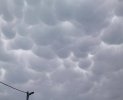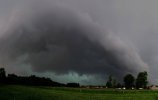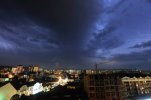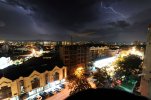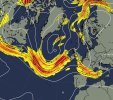Lilou said:mkrnhr said:This ha s caught my attention today: Lightning Strikes 14 People In California. A 20-year-old man died.
_http://www.huffingtonpost.com/2014/07/27/california-lightning_n_5625404.html?&ncid=tweetlnkushpmg00000067
Don't know if it's an ordinary occurence in that part of the world.
I just posted this article in the Suggestions for SOTT (did a search first, but this thread didn't pop up)
I don't know if its typical for the beach in LA, but lightning seems to be getting more frequent and more deadly all over. I kinda freaked out when learning lightning can jump thru windows, electric outlets, plumbing and what not. Always thought the house was a "safe zone". Makes me wonder if it'd ricochet off mirror as well.
Lightning can do "weird" things. But it's not so weird when you think about it.
Fun sort-of-facts about lightning:
- Average of 40 lightning strikes on the planet every second (mind you, that's normal, and the times now are NOT normal)
- Average power in a lightning strike: about 1 TW (terawatt - trillion watts, or 1,000,000,000,000 W). Your average modern nuclear reactor can output many hundred MW, up to 1 GW... that's 1000 times less power than your average lightning strike at max reactor output.
- Voltage of lightning strikes is usually on the order of tens of millions up to a few hundred million volts. Voltages this high will exceed the breakdown voltage of many insulators, including glass. If you want to be really safe, encase your house in diamond, which has a dielectric strength 200 times higher than window glass. :D
- Typical current in a lightning strike varies, but can be 10,000 A (amps) up to 300,000 A. Your average power outlet is usually on a 16A or 20A circuit breaker. So, with that much current flowing through pretty much anything, you get massive instant heating, explosions, and generally catastrophic failure of the conducting material. Keep in mind that at a high enough voltage, pretty much anything will conduct electricity. Once the conductive path is established, the huge currents flow and cause the "kaboom".
So, that's just a "mainstream" look at lightning strikes. Now add in Electric Universe stuff, and things we don't understand about electricity, and I reckon things are gonna get waaaAAAAY more interesting!

Added: Interestingly enough, Tesla patented a different kind of lightning rod. Usually, lightning rods are vertical spikes with a sharp pointed end. The idea is to "attract" the lightning and conduct it into the earth. Tesla said this was an idiotic premise. He said that since lightning usually "connects" with the ground like so (note the blue streamer reaching up towards the red streamer):
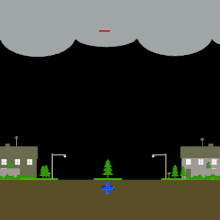
That a better idea would be to make a lightning "rod" like so:

The idea is more or less that the rounded, not-pointy, not-sharp-edged design will result in a gentle disperson of charge that will actually prevent the formation of the blue streamer that would have connected to the red streamer from the cloud, thereby "repelling" lightning strikes on the rod/building. Pretty clever idea, actually! If you are surrounding by large trees or other structures that are taller than your house, about the dumbest thing you could do is install a standard lightning rod... unless your house is made of solid copper or gold or something. ;D


